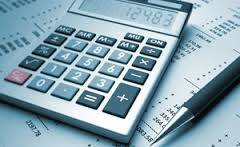What is an allocated pension?
An allocated pension is simply an account within a superannuation fund, designed to pay you regular pension payments. Within the pension account, you can invest into a range of managed investments and shares, or simply hold your money in a cash account. Investment earnings such as dividends and capital growth in underlying investment assets are added to the account and a pension is paid from the account to you on a regular basis.
One of the advantages of an allocated pension is that earnings within an account in pension phase are not taxed. That is, the tax rate inside the pension account, is zero.
The investments chosen for your pension account will depend on your risk profile. If you invest and achieve high returns, your account balance will grow and your income payments may increase. If you invest and achieve low returns your account balance will grow more slowly or even fall and your income payments may be lower. In all cases, the investment risk is yours.
How much income will you receive from your pension account?
The following table illustrates the minimum income that you are required to draw from your pension, shown as a percentage of your account balance on 1 July each year. Unless the pension is a transition to retirement pension, there is no maximum restriction as to what amount you can draw.
| Age of Beneficiary | Percentage factor |
| Under 65 | 4 |
| 65 – 74 | 5 |
| 75 -79 | 6 |
| 80 – 84 | 7 |
| 85 – 89 | 9 |
| 90 – 94 | 11 |
| 95 or more | 14 |
*Transitional arrangements were put in place by the government early in 2009 to help offset the extensive write-down of portfolios during the Global Financial Crisis; and confirmed for an extended period to 30 June 2010, at the 2009 Budget. These are no longer applicable.
You can nominate the level of pension payment you wish to receive, so long as you draw the minimum payment required. At any time, the level of pension payment may be varied.
How are payments from pension accounts taxed?
If you have reached 60, your allocated pension payments will be completely tax free. If you are under 60, the pension payments are included in your assessable income and taxed at your marginal rate. A portion of the pension payment may include a tax free amount, representing the tax free component of your superannuation balance. The remainder of the pension payment is subject to tax. If you are aged 55 or over, you will be entitled to a tax rebate of 15 per cent of the taxable portion of your pension payment (this does not apply to certain government untaxed pensions).
For example:
Amanda is 55 and has superannuation of $100,000, made up of $30,000 tax free component and $70,000 taxable component. She rolls her entire superannuation over to a pension.
Amanda’s tax free proportion is 30 per cent, meaning that every pension payment she receives will be 30 per cent tax free. She will receive a 15 per cent rebate on the remainder of her pension payments, and once she reaches 60, all of the payments will be tax free.
Allocated Pensions commenced before 1 July 2007
If you commenced your pension before 1 July 2007 your tax deductible amount is calculated as:
Undeducted Purchase Price ÷ Your Life Expectancy at commencement
This deductible amount is a fixed dollar amount and will continue until either of the following occurs:
- You reach 60, or
- A commutation occurs, or
- You roll over your pension and commence a new one.
At this time, the deductible amount will be calculated under the proportional method (see above example).
How do Centrelink and the Department of Veterans Affairs (DVA) assess allocated pensions?
The account balance of your allocated pension will be fully assessed under the assets test for Centrelink and DVA purposes. Under the income test, Centrelink and DVA allow for a “Deductible Amount” which is not assessed as income. This amount is calculated as:
Pension Purchase Price ÷ Your Life Expectancy at commencement
Only the pension income received above this amount will be assessed under the income test. Therefore if the minimum pension is drawn, usually very little, or no, income will be assessable under the income test.
What are the benefits of allocated pensions?
Allocated pensions are a very popular means of providing retirement income for many reasons, including:
- Concessional tax treatment – earnings and realised capital gains within the pension are tax free. The pension payments attract a 15 per cent rebate and become tax free when you reach 60.
- Concessional income treatment by Centrelink and DVA.
- You can be paid monthly, half-yearly or yearly: a continuing income stream.
- Subject to minimum requirements you can choose the amount of pension you receive,.
- A range of investment options available can be used to tailor your investment to your risk profile.
- You can withdraw a lump sum at any time for any reason.
- The pension account balance is available to your estate when you die and this can be paid to your spouse, child under 18 or financial dependant as a continuing income stream.
Selling investments with large unrealised capital gains while in the pension phase will not incur CGT.
What to do next…
Continuum Financial Planners has a specialty adviser available to answer your questions on Allocated Pensions and Retirement matters generally – use the contact us facility on our website (or phone our office on 07-34213456) to arrange a meeting to start to get your affairs in order.
We acknowledge the resources of Securitor Financial Group Limited in drafting the majority of the detail in the above article: it has been extracted from the Support Information to advice documents. This article was first posted on our website in November 2009: it has been refreshed occasionally, most recently in February 2020.


